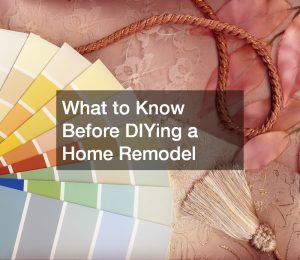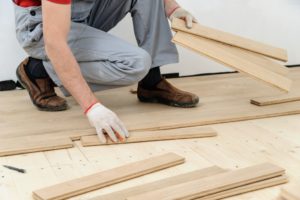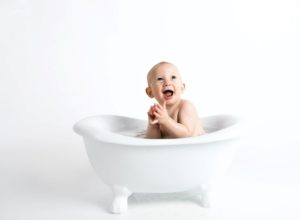- Ensure the home environment is safe by cleaning, decluttering, childproofing, window safety precautions, supervising children, and electrical maintenance.
- Falls are the leading cause of unintentional injury among children and can be prevented with proper attention to home safety.
- Install gates to block off hazardous areas, use window stops and baby locks, clean up spilled liquids, and cover electrical outlets.
- Educate children on spotting fall hazards like slippery surfaces near pools or loose area rugs on stairs.
- Improve indoor air quality by using filters on HVAC systems and incorporating plants into the home for fresh oxygen.
The home environment plays a significant role in the lives of children – not only does it provide them with the necessary support and security to thrive, but it should also be a safe place for kids. With children’s time at home, safety is crucial to protect them from potential harm or danger.
Unintentional injuries are one of the leading causes of death among children in America. In 2019 alone, more than 12,000 children ages 0-19 years old died due to an unintentional injury. Most deaths were caused by motor vehicle crashes, drowning, fire or burns, falls, poisoning, and suffocation. These numbers show an urgent need for increased awareness of creating a safe home environment for kids.
A safe home is essential for kids but can be challenging to maintain. To help protect your children from potential harm and keep them safe, parents and caregivers should focus on the following areas:
Fall Safety Hazards

Falls are one of the most common causes of injury among children. According to the CDC, falls are responsible for over nine million emergency room visits and nearly 3,000 deaths yearly in the U.S. alone. To keep your children safe from fall hazards at home, consider implementing these areas of improvement:
Cleaning and Decluttering
Keeping your home clean and clutter-free is essential to creating a safe environment for kids. Clean up any spilled liquids or small objects a child might trip on or put into their mouth. Put away cords, toys, and other items that can create tripping hazards on the floor or stairs.
Childproofing
Take extra steps to childproof your home by using gates to block off stairs or any dangerous areas, such as bathrooms, kitchens, and laundry rooms where hazardous items may be accessible to children. Install baby locks on cabinets containing potentially destructive items such as cleaning supplies, medications, sharp objects like scissors, etc. Cover electrical outlets with outlet protectors to prevent electric shock or burns if a child sticks something inside an outlet.
Window Safety
Windows offer potential fall hazards due to their height and design features like window sills that could entice a curious climber. Ensure windows are locked securely when not in use; install window guards with quick releases if needed to prevent falls from higher floors or balconies outside windows, close blinds, and shades to limit access. Moreover, use window stops so windows open no more than four inches.
Children’s Supervision & Education
Supervising children while they play is vital for ensuring safety around the house. If older siblings or adults are present during playtime, they must also pay attention to what kids are doing and where they’re going at all times so they can intervene quickly if necessary. Additionally, educating kids about proper safety measures around the house is just as important – teach them how to spot potential fall hazards such as slippery surfaces near pools or loose area rugs on stairs.
Electrical Maintenance

Electricity is a significant hazard for children, as they are often curious and unaware of the potential dangers. Electrical shock, electric burns, and electrocution can all occur in the home when kids come into contact with exposed wires or outlets. Furthermore, electrical fires in the home account for an estimated 51,000 fires each year, resulting in over 500 deaths and nearly $1.4 billion in property damage.
To keep children safe from electrical hazards at home, parents and caregivers should always check for frayed or damaged cords before plugging anything in and immediately replace any faulty lines or appliances that have been recalled. Additionally, it is essential to cover unused outlets with outlet protectors to prevent kids from sticking objects inside.
Complicated electrical repairs, however, might need to be left up to the professionals. If your home’s electrical system is outdated or needs help expanding or updating it, call a licensed electrician for a safety assessment and repair as soon as possible.
Indoor Air Quality
Poor air quality can harm children’s health and development, as many airborne pollutants are more likely to affect children than adults. According to the EPA, particle pollution is significantly higher indoors than outside, making home air quality a primary concern. To keep indoor air safe for kids, it is essential to ensure your home has proper ventilation and filtering systems.
To improve indoor air quality, use filters on all HVAC (heating, ventilation, and air conditioning) systems; if necessary, upgrade existing filters or install new ones. Additionally, consider incorporating plants into the home – certain houseplants have been proven to help reduce toxins from products like cleaning supplies and furniture treatments in the house while also providing fresh oxygen.
Final Thoughts
Creating a safe home for kids requires frequent attention and maintenance. To protect your children from harm, often check for fall hazards, childproof the house, supervise playtime, maintain electrical safety, and prioritize good air quality. With these tips in mind, you can help ensure your home is as safe as possible for your little ones.



















